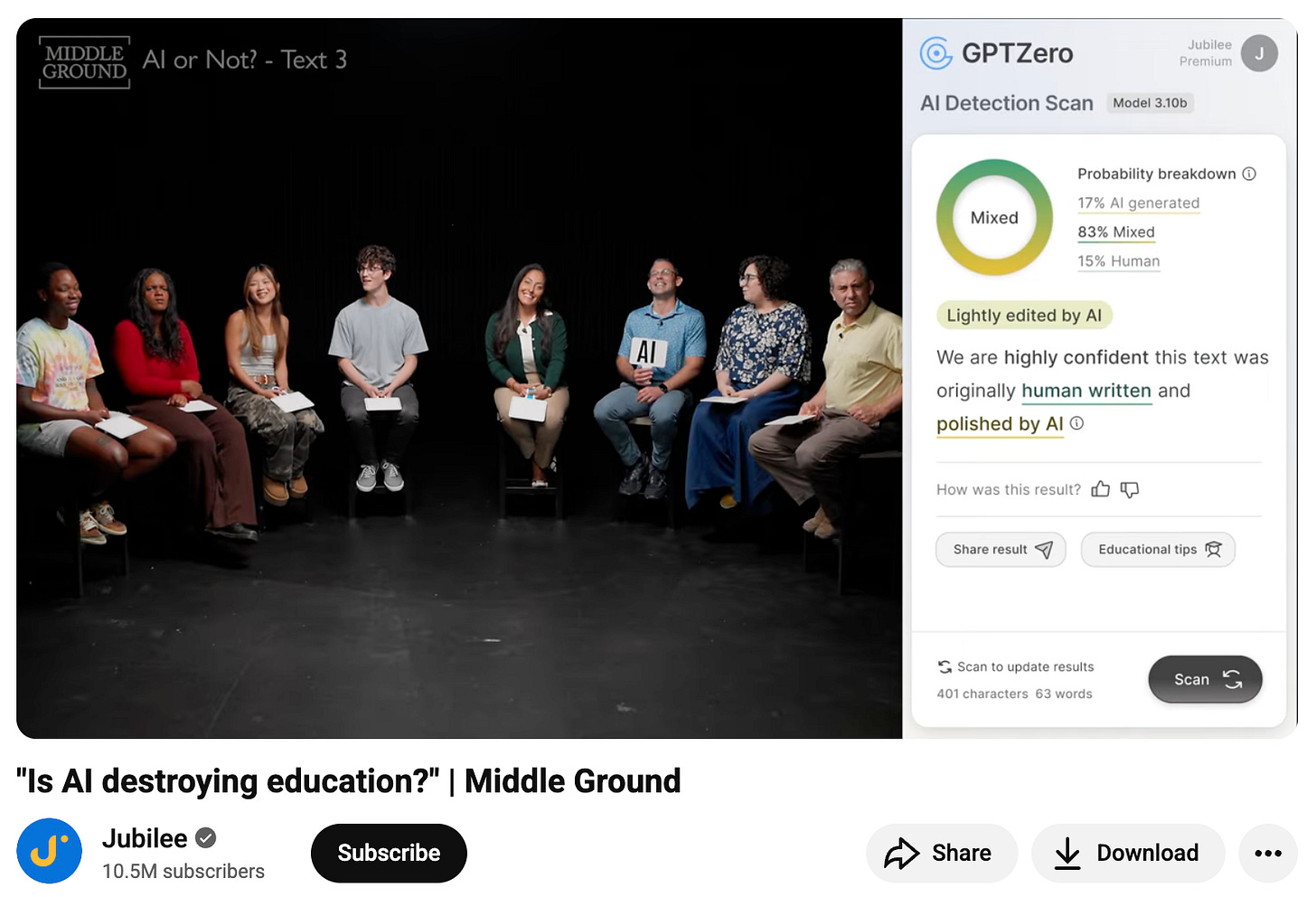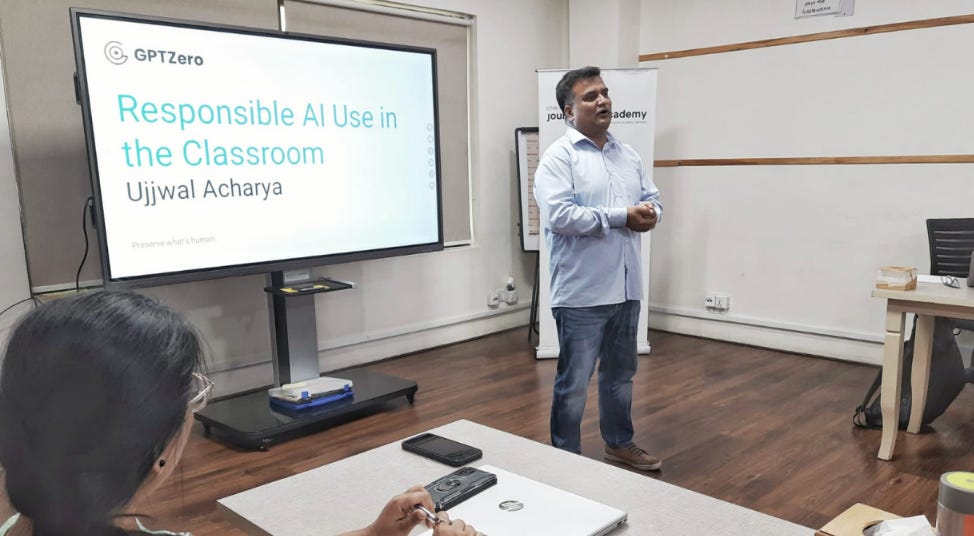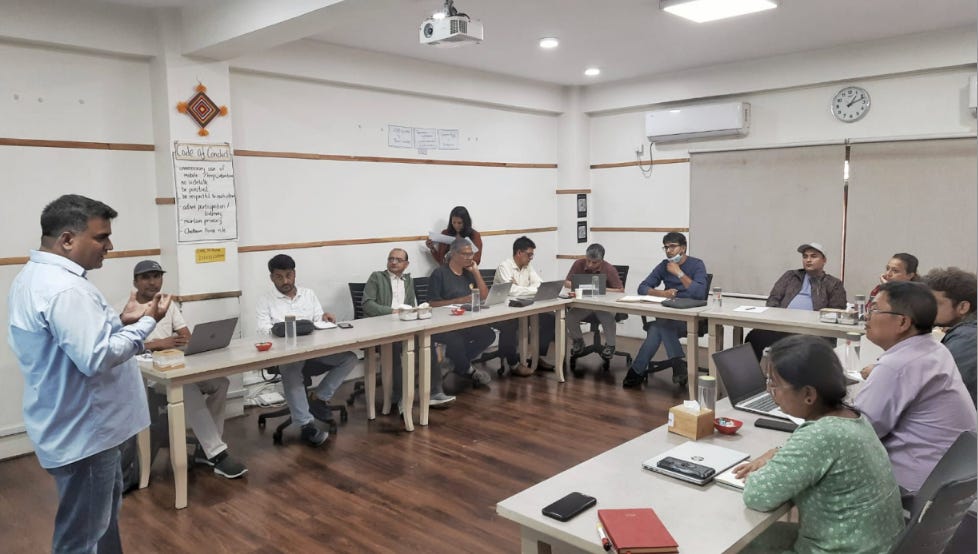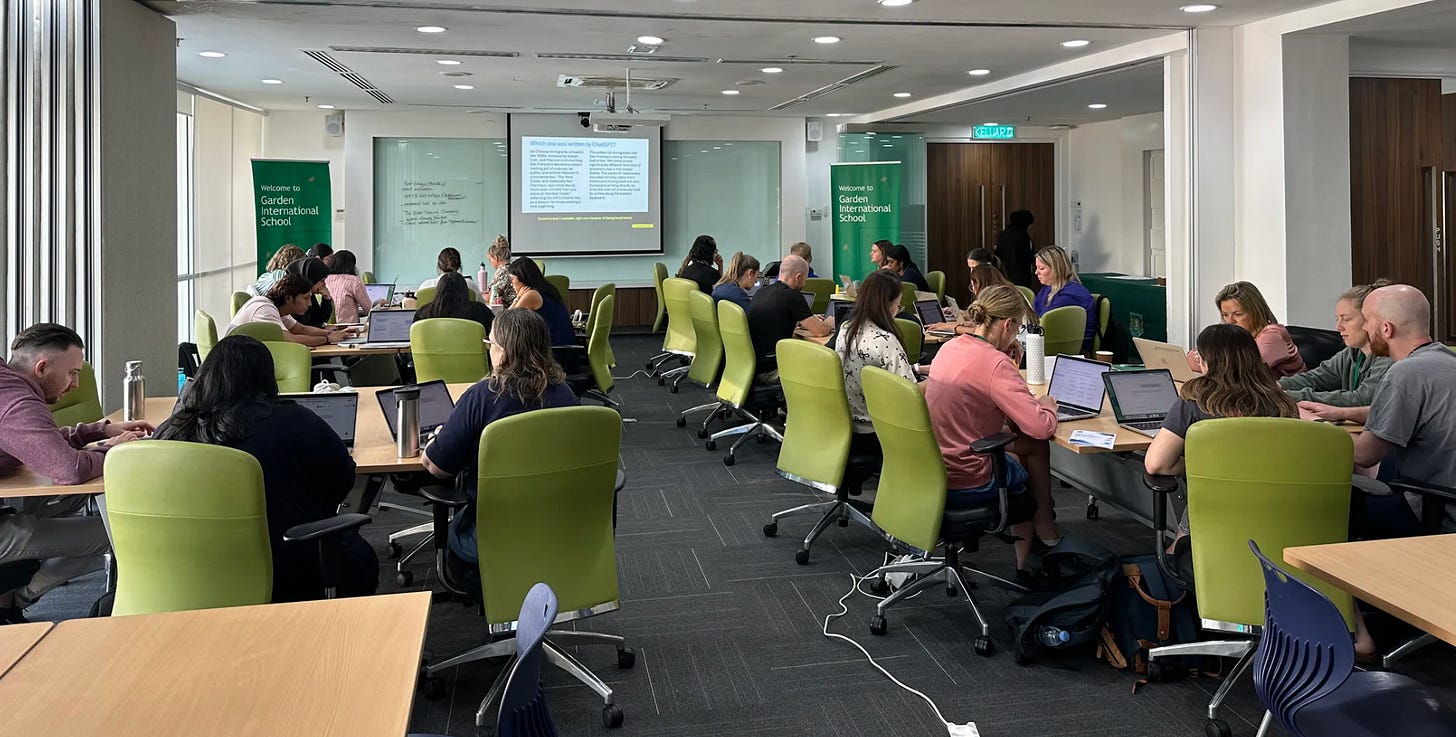Is AI Destroying Education?
and how can teachers save it
In Jubilee Media’s latest episode, “Teachers vs Students: Is AI Destroying Education?”, students and teachers sat face-to-face to read passages aloud, guessed which ones were written by humans and which were written by AI and then checked their instincts using GPTZero.
Watching this video was surreal, and it reminded me that these are the same teachers who, over the past year, have been trying to make sense of what “teaching responsibly with AI” actually looks like.
It was incredible to see our work sparking real, public conversation about the role of AI in the classroom and exactly the kind of dialogue we built GPTZero to enable.
TLDR: AI is not destroying education.
Watch the full video here.
But the Jubilee episode is really just the tip of the iceberg. Behind the scenes, something much bigger has been taking shape: a teacher-led movement that is redefining what responsible AI in education looks like.
When AI first entered schools, there were no rulebooks. Every district and every classroom was improvising. Some banned AI tools outright, and others embraced them overnight. Most teachers were left in the middle, trying to figure it out alone. That uncertainty inspired us to start our Teaching Responsibly with AI webinar series earlier this year, a space where educators could come together and learn from one another. We expected a few dozen attendees. We got thousands.
The response told us something important: teachers needed more than tools. They wanted community. They wanted to know they weren’t the only ones navigating this huge shift, trying to preserve what’s human about learning while still preparing students for an AI-shaped world. So we built a space for them to do exactly that.
That’s how the GPTZero Teacher Ambassador Program was born, as a grassroots experiment in collective intelligence. We invited teachers who attended our webinars to host local sessions within their own schools and regions. What’s unfolded since has been extraordinary. Since early September, the program has grown from 771 to 1,366 Ambassadors, with 180 sessions hosted with more than 5,000 educator attendees.
Each of those numbers represents a conversation happening somewhere, where educators are asking big questions about AI literacy, and demonstrating that they themselves are the revolution when it comes to using AI responsibly in education.
Many of the ambassadors have presented to their colleagues, classrooms, or sometimes an entire school. One of our educator ambassadors, Raymond, joined the Jubilee video. All are sharing with each other classroom insights across our exclusive AI education WhatsApp groups. These teachers represent the real voices of AI in education.
It’s easy to think of technology as something that scales through code, but the truth is, ideas scale through people. The GPTZero AI certificate and Ambassador Program has become proof of that conversations scale. Teachers are designing workshops and sharing case studies about everything from AI-assisted writing to ethical grading practices. They’re done waiting for a national policy to tell them what to do; they’re writing the playbook themselves.
Thank you for reading this far. If you’re an educator interested in joining our AI ambassador program, accessing exclusive perks and an amazing community, please email hriday@gptzero.me or fill out the google form here. At GPTZero, we often focus on accuracy and benchmarks. Recently, we placed first in the North America on RAID, one of the most comprehensive independent AI detection benchmarks, as the most accurate commercial AI detector. These things matter.
But what moves me most is watching educators take our mission of responsible AI adoption and make it their own. When I scroll through teachers around the world sharing photos from their workshops, I’m reminded that the future of responsible AI isn’t being built in Silicon Valley or even in our NYC office: it’s being built in classrooms, one conversation at a time.
That’s why we’re welcoming a new community lead to our team later this month: someone dedicated entirely to growing and supporting the teacher network.
To every educator who has joined a webinar, hosted a session, earned a certificate, or simply stayed curious, thank you. This movement exist because of you.





Love this!